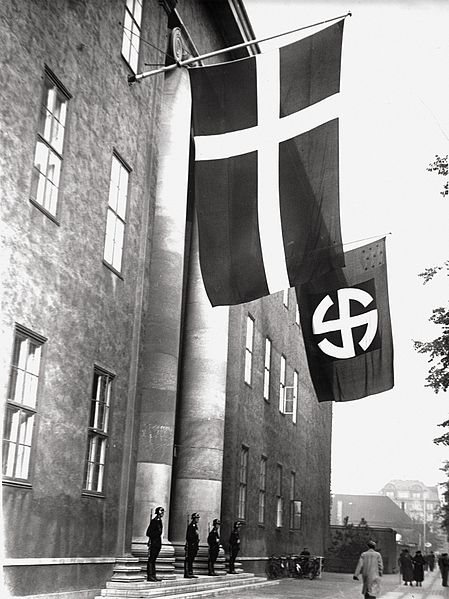Danish resistance movement
The Danish resistance movements were an underground insurgency to resist the German occupation of Denmark during World War II. Due to the initially lenient arrangements, in which the Nazi occupation authority allowed the democratic government to stay in power, the resistance movement was slower to develop effective tactics on a wide scale than in some other countries.
Image: Members of the resistance movement in fight with German soldiers Flakhaven in Odense 5th of May 1945
Image: København, 1945
M1917 Enfield used by a resistance group in Haslev.
Railway shop workers in Frederiksværk built this armored car for offensive use by the Danish resistance. It was employed against Danish Nazis, known as the Lorenzen group, entrenched in the plantation of Asserbo in North Zealand. May 5, 1945
At the outset of World War II in September 1939, Denmark declared itself neutral, but that neutrality did not prevent Nazi Germany from occupying the country almost immediately after the outbreak of war; the occupation lasted until Germany's defeat. The decision to occupy Denmark was taken in Berlin on 17 December 1939. On 9 April 1940, Germany occupied Denmark in Operation Weserübung. The Danish government and king functioned in a relatively normal manner until 29 August 1943, when Germany placed Denmark under direct military occupation, which lasted until the Allied victory on 5 May 1945. Contrary to the situation in other countries under German occupation, most Danish institutions continued to function relatively normally until 1945. Both the Danish government and king remained in the country in an uneasy relationship between a democratic and a totalitarian system until 1943 when the Danish government stepped down in protest against German demands that included instituting the death penalty for sabotage.

Headquarters of the Schalburg Corps, a Danish SS unit, after 1943. The occupied building is the lodge of the Danish Order of Freemasons located on Blegdamsvej, Copenhagen
Danish soldiers man an anti-aircraft gun, 1940. All wear the distinctive Danish helmet.
Danish Prime Minister Thorvald Stauning addresses the Rigsdagen in Christiansborg Palace on the day of the invasion.
DNSAP's parade at Rådhuspladsen 17 November 1940. The parade was held in connection with DNSAP's attempt to seize power.








